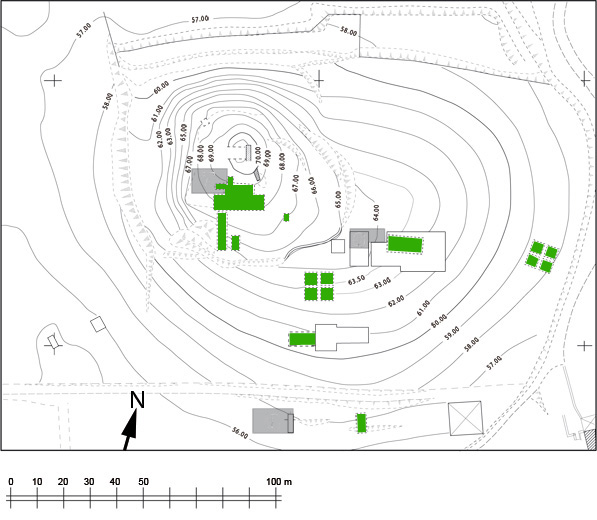The first research program (1961-1975)
 From 1961 to 1975, Jean Deshayes et Dimitrios Theocharis conducted the first systematic excavations at Dikili Tash under the auspices of the French School at Athens and Archaeological Society at Athens. Their main objective was to determine the stratigraphic and chronological sequence of the Neolithic and Bronze Age in the region, which was poorly known until then.
From 1961 to 1975, Jean Deshayes et Dimitrios Theocharis conducted the first systematic excavations at Dikili Tash under the auspices of the French School at Athens and Archaeological Society at Athens. Their main objective was to determine the stratigraphic and chronological sequence of the Neolithic and Bronze Age in the region, which was poorly known until then.
Excavations were carried out near the top and on the southern and eastern slopes of the tell. The Greek team, which was only at the site for two field seasons (1961 and 1967), opened two sectors on the eastern slope, c. 20 meters distant from each other, covering an area of 300m2. The French team made several smaller trenches covering 341m2 in total, grouped in three areas: one at the top and two on the southern slope (middle and lower part). They were present for six campaigns (1961, 1967, 1969, 1972, 1974 and 1975).
None of the sectors reached the natural (virgin) soil and thus none offers a complete stratigraphic sequence, but the correlation of the sequences obtained in various sectors allowed the determination of the general stratigraphic sequence : four major occupation phases, labeled I to IV, represent respectively the beginning and the end of the Late Neolithic period (phases I-II), the Early Bronze Age (phases IIIA-B) and the Late Bronze Age (phase IV). Thanks to a long series of radiocarbon dates, one of the first in the region, it has been possible to determine the age and duration of each period, which cover altogether more than four thousand years (ca. 5400-1100 BC.). The top of the mound also yielded traces of later occupation.
These results proved that the end of the Neolithic in Macedonia, and by extension in most of the Balkans, clearly preceded the beginning of the Aegean Early Bronze Age as it was known from the first settlement at Troy. In addition, they showed that there exists an even earlier stage, equivalent to the Dikili Tash phase ΙΙΙΑ, which represents the actual start of the Bronze Age. This sequence was later confirmed by the excavations at Sitagri (northwestern part of the Drama plain) and Ezero (Bulgarian Thrace).
Apart from their historical contribution, the excavations of Theocharis and Deshayes revealed the site’s outstanding wealth and the high quality of the various artifact categories, especially during the Neolithic period (pottery, figurines, jewelry, etc). Many houses that were destroyed by fire still preserve part of their architectural elements in place (e.g., walls and thermal structures).

